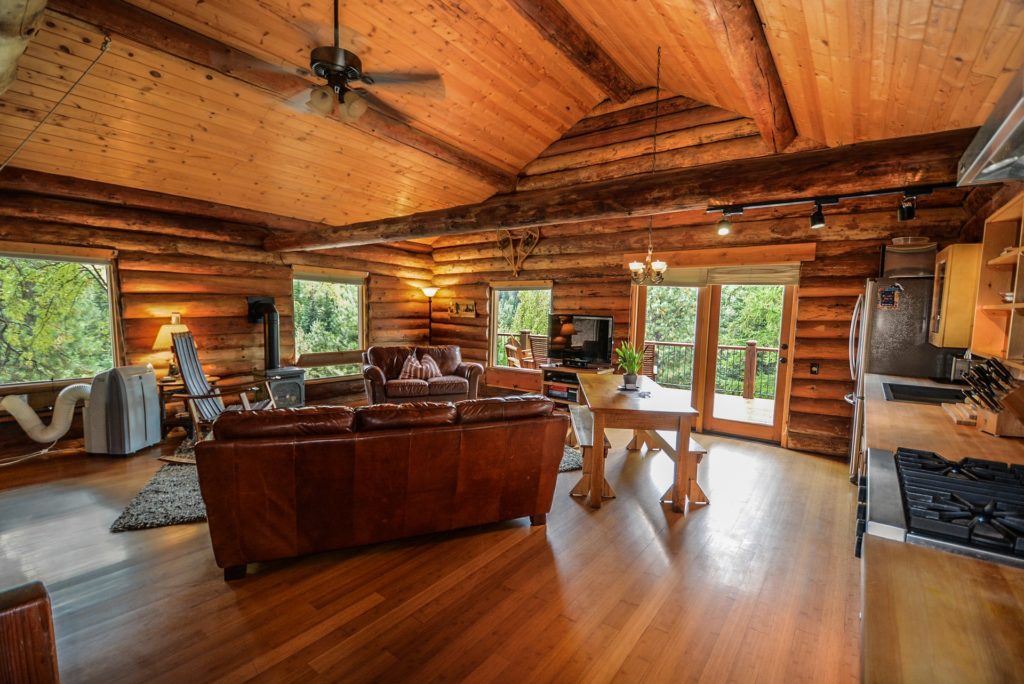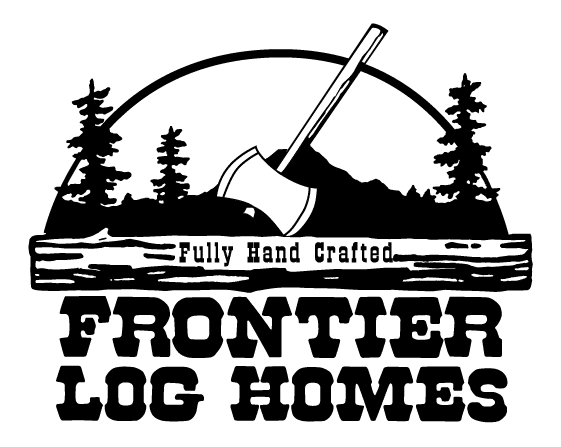There is little not to love in a log home! Since they are built from natural wood, they perfectly fit their surrounding environment and seamlessly blend into the landscape. Log homes are energy-efficient and provide incredible heat retention and noise insulation, making your life more quiet and peaceful. Plus, their thermal retention means lower energy bills. And who wouldn’t want to touch the warm and welcoming feel of wood when entering their house?
However, because log houses are built of, well, wooden logs, they have some natural enemies which can endanger their robustness.
With special care, maintenance and attention to details, a log home can become a family house passed from one generation to the next.
This article describes some common enemies of log houses and explains how to stop them from hurting your beautiful home.
Insects and log homes
Log homes are made of wood. It is inevitable that this natural and biodegradable material will attract insects like termites or carpenter bees, just like bugs settle in trees in the middle of the forest.
Beetles and carpenter ants and bees colonize logs and leave tiny holes in the logs, alongside a little dust. If you see such insect holes in your logs, it may mean you have a moisture problem.
With termites, you may also see tiny holes in the wood and tiny piles of dust. Termites get into the wood from cracks. Therefore, treating holes and cracks and stopping termite access is the first step toward limiting a termite problem.
The most important step to protect your Frontier log home from insects, especially termites, is to make sure that the logs or any wood are not in contact with the ground.
Borate preservatives protect logs from termites, beetles, and ants. The borate is applied to the logs and slowly soaks in. This ensures that, if insects try to attack the logs, they will ingest the borate and die before they can cause any damage.
Mold and Log Homes
Unfortunately, mold might appear on your exterior logs, especially in humid or rain-heavy areas. Mold is usually black, so you will know you have a mold problem if your logs are turning black and have started to discolor.
Should this happen, clean the mold and apply a borate preservative. Borate soaks into the wood when dried and prevents mold from setting in.
If you have mold or mildew problems in your log home, it’s necessary to find the cause of the mold by looking for any cracks on the wood that allowed the mold and fungi to enter the log. Once found, cracks should be sealed to prevent moisture from entering the logs.
Rainwater and Log Homes
Rainwater, snow, and sun can have an adverse effect on log homes.
In the case of rain, the best way to avoid future trouble is to build a log home that sheds rainwater and snow away from the roof and from the log walls. A log home should have a proper gutter and drainage system. Rain should run away from the home, toward lower parts of the land.
It is a good idea to invest in roof overhangs that will carry the water away from the roof and walls and toward the drains and the ground. If rainwater stagnates on logs for long periods of time, these will inevitably start to rot.
Log homes should be regularly inspected for rain and moisture damage and should be treated with preservatives and water protection. Log homeowners can stain their logs on the outside to protect them from rain. They should do the same on the inside, too, especially in rooms and areas prone to humidity such as the bathroom or the kitchen.
Remember that log ends are more prone to water damage and should be checked for moisture retention more carefully.
It is useful to keep in mind that large overhangs also protect logs from sun exposure, as well as rain. There are various log-treating stains that contain UV shielding agents, to protect your logs from sunrays. Extreme exposure to the sun may lead your logs to break down or deteriorate and crack. These cracks can become entry points for insects, moisture, and rain, so it’s best to act preventively and protect your logs from the beginning.
Log Homes Shrink and Settle
Log homes are alive. They shrink and settle over time once your home is built.
Logs shrink as they lose moisture. Shrinkage depends on the type of wood used and the initial moisture content, among other things. Thus, log homes ‘settle’ over time, as the log layers settle and compress on each other and on the foundation. Frontier Log Homes is always careful to build with dry, standing-dead trees to keep future shrinkage at a minimum when building a home. Some shrinkage can be unavoidable, however by following the proper building techniques we have developed over the years most problems are greatly reduced.
Settling and shrinkage can lead to logs developing cracks and splits which can be access points to moisture, mold, and insects. Therefore, it is crucial for log homeowners to inspect their logs and make sure that any cracks and splits are taken care of by caulking and sealing.
Protecting your Frontier Log Home from Moisture and Humidity
Here are a few tips to keep your Frontier log home as safe and sturdy as possible:
It’s best if your lawn sprinklers do not sprinkle any water directly on your log home. This way, your logs will not get wet on a permanent basis and you will avoid humidity on or near your house. Bear in mind that hot summer conditions can cause extra humid situations around your home.
In addition, it is best to avoid planting bushes in close proximity to your log house because they could gather water and cause humidity. Although trees give shade in summer, they also limit the sunlight logs need to stay dry. It’s better to have bushes and trees spaced out around the house so that air can circulate freely and dry out any lingering humidity.
If you are building your log house from scratch, elevate your walls so that they don’t touch the ground. Putting a cement foundation and making sure your log walls do not start from the ground will be vital in the future, as you will avoid rotting lower logs.
How to Treat your Log Home Exterior
Staining your log home is different than painting it. A stain soaks the logs and seeps in, therefore treating any problems happening inside the log.
Paint, on the other hand, can clog the surface of a log without allowing it to breathe. Also, paint might cover termite or moisture problems. It is best not to paint your log home.
You may need to use a preservative to protect your home from insects, UV rays, and moisture.
You will also require chinking between your logs to close gaps that could be entry points to environmental enemies.
Conclusion
Your Frontier log home will remain beautiful and strong if you carry regular inspections and maintenance throughout the year. That way, you will have a log home that your children and grandchildren will love and cherish and can pass on to the next generation.
Are you ready to build your own log home? Contact us at Frontier Log Homes to get building! Call us at 970-249-7130 to learn more about our log cabin kit options.


